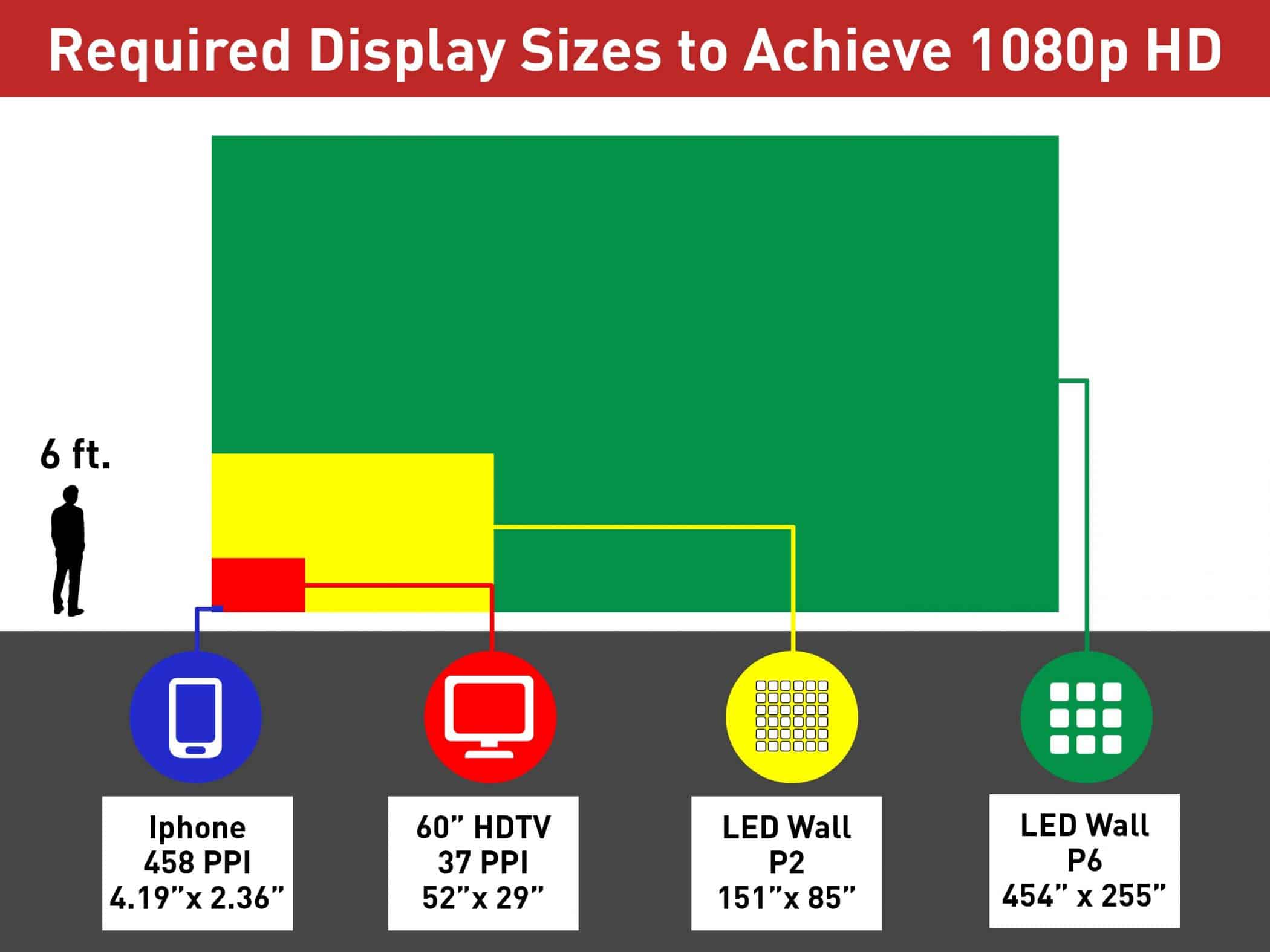
Pixel pitch (also referred to as “dot pitch”), is a method of measuring pixel density, calculated as the distance, in millimeters, between the center of 2 pixels on an LED display board. It is written in the form of p[mm). For example, an LED display with a 4.8mm pitch would be written as P4.8. Pixel pitch is the most common way of measuring pixel density of LED video walls and jumbotrons.

The lower the pixel pitch, the more tightly packed together the pixels are (the higher the pixel density). The higher the pixel density, the higher the display resolution (pixel count) is within a given area. So, a lower pixel pitch is better than a higher one. For example, a 1mm (p1) video wall will be 6x the resolution of a 6mm (p6) video wall of the same size since the pixels in a 1mm panel are 6x closer together than a 6mm panel. Here is the concept illustrated on a 16:9 ratio 16’ x 9’ LED video wall:

As illustrated above, lower pitches result in significantly higher resolutions. A 16′ x 9′ P1 LED wall results in a resolution similar to UHD 4k, whereas a P20 of the same size is only 244x137p, a relatively tiny resolution.
Pixel pitch is important to consider with 2 factors of an LED video wall – the size of the board and the required viewing distances.

While pixel pitch is the most common way for measuring the pixel density of large video walls, smaller devices such as HDTV’s and handheld devices use a different measurement – Pixels per inch (PPI). Pixels per inch is exactly what you would guess – the number of pixels contained in one inch of the display. In contrast to pixel pitch, the higher the PPI, the higher the pixel density. PPI and pixel pitch measure the exact same thing, just in different ways. For example, the Iphone XS has a PPI of 458. In one inch, there are 458 pixels. A pixel density of this caliber is exponentially higher than any video wall. 458 PPI converted to a pixel pitch is a pitch of .0556, which does not exist for a video wall. To put it into perspective, here are some standard pixel densities and the relative size required to achieve a resolution of 1920x1080p.

The takeaway is that LED video walls utilize much lower pixel densities than HDTV’s and handheld devices, due to the required viewing distances and average display sizes. That is why most LED video wall companies will not rent a display smaller than 12 feet or so wide. A small video wall at standard video wall pitches will amount into very low-resolution boards. Video walls are designed for size.
Pixel pitch is important for determining the clarity of your display based on viewing distance and display size. LED video wall rental and sales companies will help you select the proper pitch based on the above information. But now that you are armed with this knowledge, you can make a more informed decision on the exact LED screen product you would like to rent or buy, as well as shop around for different companies. Do you still have questions or are you interested in renting or buying an LED screen? Shoot us an email, we would love to discuss any questions or ideas you may have.